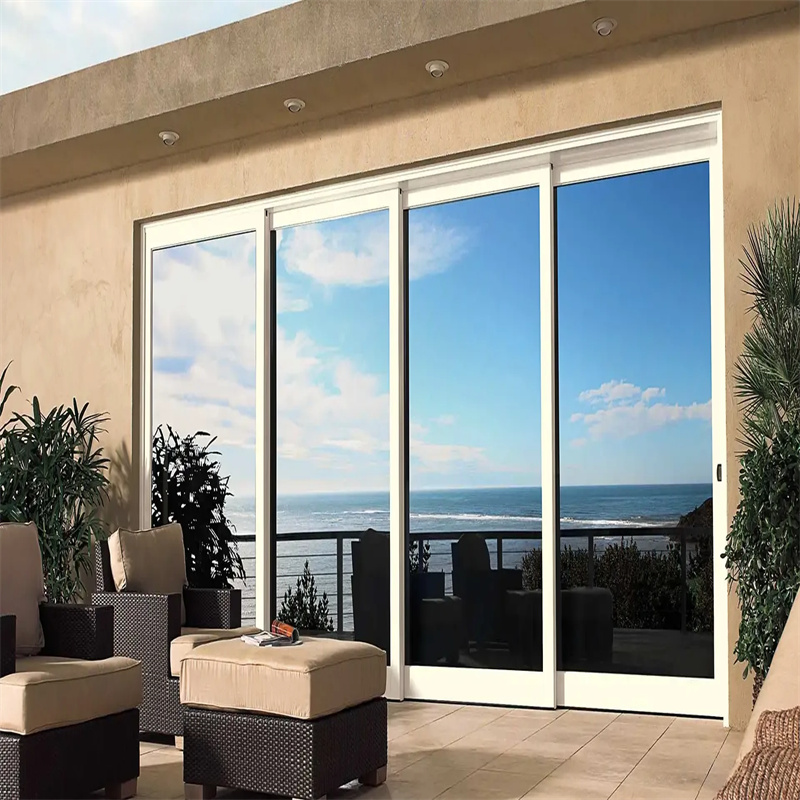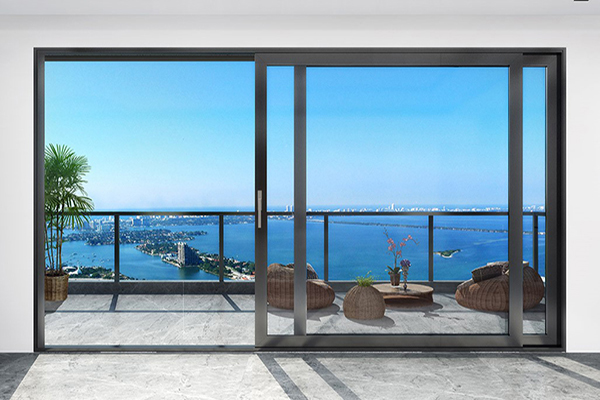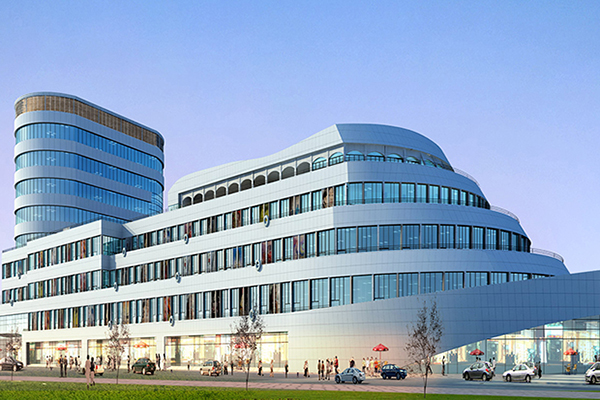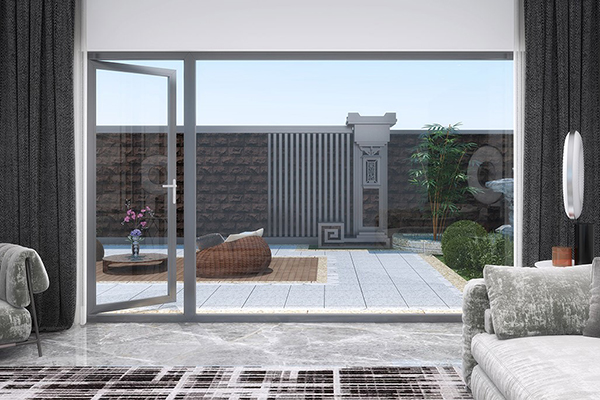From Raw Materials to Finished Products: Unveiling the Entire Process of High-End Aluminum Window Production Technology
The production of high-end Aluminum Windows is a sophisticated process that transforms raw aluminum into durable, aesthetically pleasing, and energy-efficient window systems. This intricate journey involves multiple stages, from raw material preparation to the final assembly of finished Aluminum Windows. At the heart of this process are three critical stages: aluminum profile cutting, surface treatment, and assembly. These steps ensure that Aluminum Windows meet stringent quality standards, offering both functionality and visual appeal. This article delves into the entire production process, with a particular focus on showcasing aluminum profile cutting, surface treatment, and assembly processes for them.

Raw Material Preparation: The Foundation of Quality
The journey begins with raw aluminum, typically sourced in the form of bauxite ore, which is refined into aluminum ingots. These ingots are then extruded into aluminum profiles, the backbone of high-end Aluminum Windows. The extrusion process involves heating aluminum billets to a malleable state and forcing them through a die to create long, uniform profiles with precise cross-sectional shapes. These profiles are designed to accommodate various components of Aluminum Windows, such as frames, sashes, and thermal breaks.
The quality of raw materials is paramount for Windows. High-end Aluminum Windows often use 6063-T5 or 6061-T6 aluminum alloys, known for their excellent strength-to-weight ratio, corrosion resistance, and machinability. Before extrusion, the aluminum is tested for purity and alloy composition to ensure it meets industry standards for windows. This meticulous preparation sets the stage for the subsequent manufacturing processes.
Aluminum Profile Cutting: Precision in Shaping
The first critical stage in the production of Aluminum Windows is aluminum profile cutting, where extruded profiles are cut into precise lengths and shapes to form the structural components of Aluminum Windows. This process demands high precision to ensure that each piece fits seamlessly during assembly. Modern manufacturers employ advanced cutting technologies, such as computer numerical control (CNC) machines and laser-guided saws, to achieve tolerances as tight as ±0.1 mm for Aluminum Windows.
The cutting process begins with the creation of a digital blueprint, often using computer-aided design (CAD) software. This blueprint specifies the exact dimensions and angles required for each profile of Aluminum Windows. For high-end Aluminum Windows, profiles are often cut at 45-degree angles to create mitered corners, which enhance both structural integrity and aesthetic appeal. Specialized tools, such as double-head miter saws, are used to ensure simultaneous cutting of multiple profiles, improving efficiency and consistency for Aluminum Windows.
During cutting, manufacturers must account for thermal breaks—insulating strips inserted into profiles to reduce heat transfer in Aluminum Windows. These breaks require precise cuts to maintain their alignment and effectiveness. Any inaccuracies at this stage can compromise the performance of Aluminum Windows, making precision cutting a cornerstone of high-end Aluminum Window production.
Surface Treatment: Enhancing Durability and Aesthetics
Once the profiles are cut, they undergo surface treatment to enhance the durability, corrosion resistance, and visual appeal of Aluminum Windows. Surface treatment is a pivotal process that distinguishes high-end Aluminum Windows from standard ones. The two most common methods are anodizing and powder coating, each offering unique benefits for Aluminum Windows.
Anodizing
Anodizing involves immersing aluminum profiles in an electrolytic solution and applying an electric current to form a thick oxide layer on the surface of Aluminum Windows. This layer, typically 15–25 microns thick, significantly improves corrosion resistance and wear resistance. Anodized surfaces on Aluminum Windows are also highly scratch-resistant and can be dyed in various colors, such as bronze, champagne, or black, to meet aesthetic preferences. The process is environmentally friendly, as it produces minimal waste and uses non-toxic chemicals for Aluminum Windows.
Powder Coating
Powder coating, on the other hand, involves electrostatically applying a dry powder to the aluminum surface, which is then cured under heat to form a hard, protective layer on Aluminum Windows. This method offers a wide range of color options and textures, including matte, gloss, and metallic finishes. Powder-coated surfaces on Aluminum Windows are highly resistant to chipping, fading, and UV damage, making them ideal for harsh environmental conditions. The thickness of the coating, typically 60–120 microns, ensures long-term durability for Aluminum Windows.
Both anodizing and powder coating for Aluminum Windows are subject to rigorous quality control. Treated profiles are tested for coating thickness, adhesion, and resistance to salt spray and UV exposure. These treatments not only enhance the longevity of Aluminum Windows but also contribute to their sleek, modern appearance, a hallmark of high-end designs.
Assembly: Bringing Components Together
The final stage of production is assembly, where cut and treated profiles are combined with other components to create fully functional Aluminum Windows. This process requires meticulous attention to detail to ensure structural integrity, airtightness, and thermal performance of Aluminum Windows. The assembly process typically involves the following steps:
Frame and Sash Construction : Cut profiles are joined to form the window frame and sash of Aluminum Windows. For mitered corners, profiles are connected using corner cleats or crimping techniques, ensuring a strong and seamless bond. Thermal break strips are inserted during this stage to enhance energy efficiency in Aluminum Windows.
Hardware Installation : High-end Aluminum Windows incorporate advanced hardware, such as multi-point locking systems, friction hinges, and automated opening mechanisms. These components are carefully installed to ensure smooth operation and security. Precision is critical, as misalignment can lead to operational issues or air leaks in Aluminum Windows.
Glazing: The glass panels of Aluminum Windows, often double- or triple-glazed with low-emissivity (Low-E) coatings, are installed into the sash. Spacers filled with argon gas are used to improve insulation, while silicone or butyl rubber seals ensure an airtight fit. The glazing process for Aluminum Windows is conducted in a cleanroom environment to prevent dust or debris from compromising the glass.
Quality Testing : Assembled Aluminum Windows undergo rigorous testing to verify their performance. Tests include air infiltration, water penetration, thermal conductivity (U-value), and structural strength under wind loads. High-end Aluminum Windows are designed to meet or exceed standards such as those set by the American Architectural Manufacturers Association (AAMA) or the European EN 14351-1.
Quality Control and Sustainability
Throughout the production process of Aluminum Windows, quality control is paramount. Each stage—from raw material inspection to final testing—is monitored to ensure compliance with industry standards for Aluminum Windows. Advanced technologies, such as 3D scanning and automated inspection systems, are used to detect defects and ensure consistency in Aluminum Windows.
Sustainability is also a key consideration in high-end Aluminum Window production. Aluminum is highly recyclable, with up to 75% of all aluminum ever produced still in use today. Manufacturers often use recycled aluminum to reduce energy consumption and carbon emissions in the production of Aluminum Windows. Additionally, energy-efficient Aluminum Windows contribute to green building certifications, such as LEED or BREEAM, by reducing heating and cooling costs.
Conclusion
The production of high-end Aluminum Windows is a testament to the marriage of advanced technology and skilled craftsmanship. From the precise cutting of aluminum profiles to the application of durable surface treatments and the meticulous assembly of components, each stage is carefully orchestrated to deliver Aluminum Windows that are both functional and visually stunning. By focusing on precision, durability, and sustainability, manufacturers ensure that Aluminum Windows meet the demands of modern architecture while providing long-lasting performance. As the industry continues to innovate, the process of transforming raw materials into high-end Aluminum Windows will only become more efficient and environmentally friendly, solidifying their place in the future of construction.










